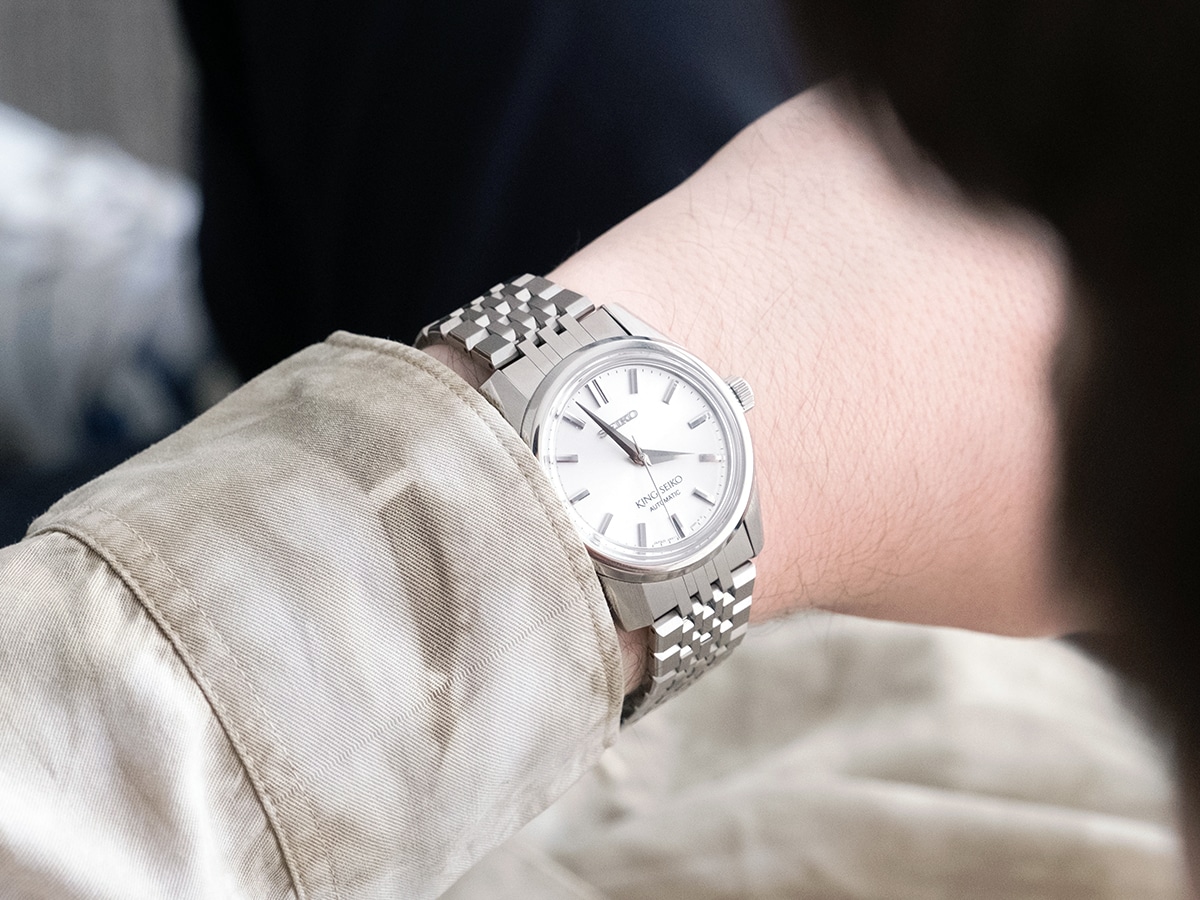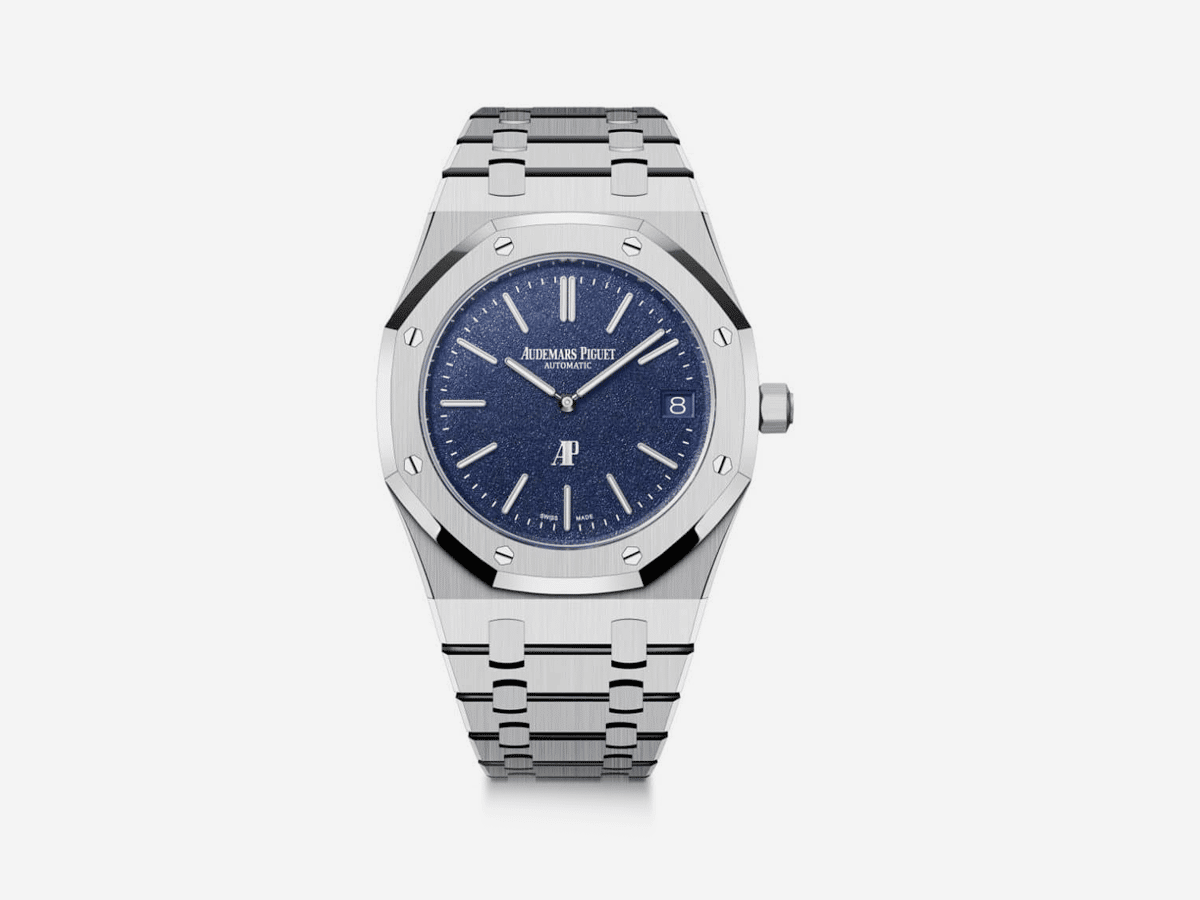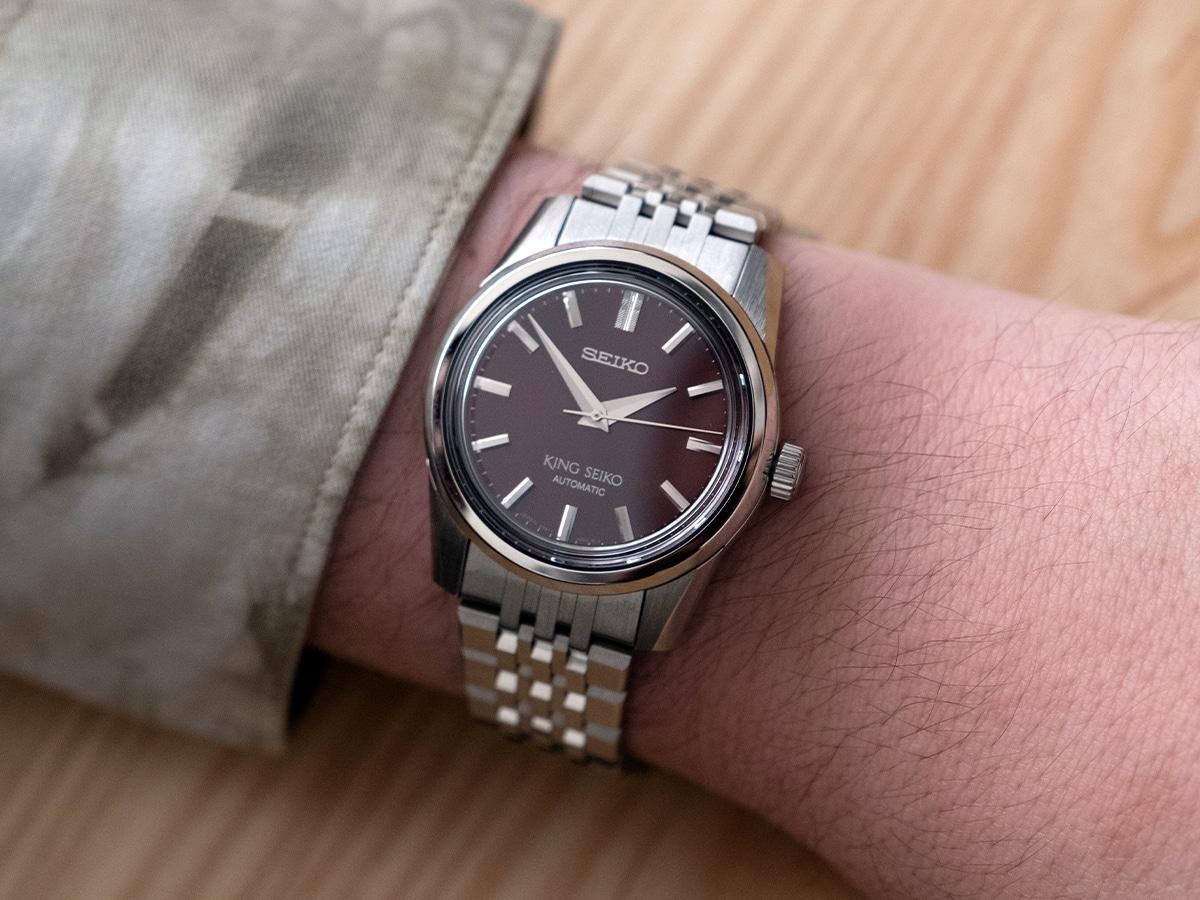
Published:
Readtime: 6 min
Every product is carefully selected by our editors and experts. If you buy from a link, we may earn a commission. Learn more. For more information on how we test products, click here.
There’s a certain feeling amongst watch connoisseurs regarding oversized watches. You know those monstrosities with thick bezels, giant cases, and straps that could pull a car out of the mud? We’re pointing the finger at dive watches mainly, but as they grew to 46mm and beyond, dress watches seemed to follow.
Thankfully, times are changing, and with recent releases like Tudor’s 39mm Pelagos and the similarly sized Ranger – not to mention Rolex’s 36mm Explorer and Seiko’s new range of King Seiko’s – luxury watchmakers are increasingly offering fans a great selection of modestly sized watches. It seems that there’s a renewed interest in smaller, more subtle watches and we want to show you why you should embrace them.
Related: Grand Seiko Unveils Two Tributes to its Ground-Breaking Mechanical Movement.

5 Reasons You Should Embrace Small Watches
There are a variety of reasons why we’d encourage you to take a closer look at some of the smaller watches on the market today under 40mm. Whether it’s aesthetics, functionality or authenticity, there is going to be at least one reason why you might find your holy grail watch in this popular niche.
1. You Should Learn to Love Vintage Watches
This is the most obvious reason to jump on the bandwagon of smaller watches. Historically, watches have always been comfortable and modestly sized. If you’re a fan of vintage watches then by default you’ll be into wearing a smaller timepiece. Think about it this way, the first Rolex Submariner was only 37mm wide and Omega’s early Seamaster watches were even smaller. Collectors of vintage watches have always appreciated slim and classically styled models and the latest trend just doubles down on this.
2. The Beauty of Modern Remake Watches
The big names in horology have had the sense to regularly dig into their own back catalogues for design inspiration. We’ve seen it with Oris, Rado watches and others. It makes sense to them. They recreate their most iconic watches of the past and watch fans get to wear a brand-new version. An old design produced with the latest watchmaking knowledge and with a full factory warranty. What’s not to like about that? Obviously, to remain authentic the remake model will also recreate the smaller sizing of the original.
3. Smaller Watches are More Versatile
We can all appreciate the heft of a substantial watch and it’s one of the reasons why dive watches are so popular. There’s something reassuring about a heavy and tough watch. And of course, for some niches, the watches should be large. Aviation watches were designed to display the time clearly, often when the pilot was wearing gloves and a thick jacket, so it makes sense that they’re big.
But most of us now wear our watches in a different environment. In the office or restaurant, we’ll need our watch to match the occasion. There’s no need for a monster timepiece. Even at the gym or beach, a big watch can be too cumbersome. A slimmer watch – with a mid-sized width – is much easier to wear on a daily basis. They’re very practical. Take Seiko’s King Seiko SPB279J as a recent example of a versatile smaller watch (pictured throughout this article). At 37mm it hits that sweet spot where it’s noticeably larger than a woman’s watch, but not too large to be impractical.
4. Smaller is Comfier – Especially for Small Wrists
If you’ve ever worn a large watch – a 46mm IWC Big Pilot for example – you’ll know what it feels like to have the crown dig into your hand. If you’ve also got small wrists, a watch that size is going to feel like a lead weight. For many of us, a smaller watch is much more comfortable, particularly if the small diameter is paired with wrist-hugging lugs. But make no mistake, small watches aren’t feminine. Yes, there was a trend for very slim unisex minimalist watches, but for the most part, smaller watches are just more comfortable and wearable versions of very similar large models.
5. Tech’s Influence on Watch Design and Why Intricacies Maketh the Watch
There’s a strong argument that innovations in the tech sector have had an increasing influence on the world of wristwatches. As people refer more to their phones than their wrists to tell the time and as wristwear becomes a tool to measure steps, then the role of the wristwatch changes. The latest Apple Watch Ultra has a whopping 49mm Titanium Case.
Now, more than ever, the wristwatch is a piece of jewellery that we wear as a celebration of workmanship and mechanical excellence. Smaller watches challenge the designers and watchmakers to fit more into less space and push horological innovation. We’ve seen that with watchmakers like Audemars Piguet whose Royal Oak Jumbo Extra-Thin is a little over 8mm thick.

Small Watches Versus Large Watches
Before we sign off, let’s be clear, there’s nothing inherently wrong with large watches. We regularly sing the praises of tough and hefty watches. Who wouldn’t like an authentic Italian Navy watch from Panerai or IWC’s Big Pilot? They’re awesome timepieces with a military aesthetic that sets them apart from other divers’ watches. But remember the story of how Panerai became a watchmaking sensation?
Sylvester Stallone discovered the brand while strolling through Rome looking for a watch to wear when filming Daylight. He loved the watch so much that he gifted one to Arnold Schwarzenegger and between them, they popularised the cult brand. But unless you also have arms the size of Rocky or Mr Olympia you might want to wear something a bit smaller. It’s not like you’d wear the same size shirt as those guys.
You’ll also like:
Seiko’s All-Purpose Prospex is the Ultimate Outdoor Adventure Watch
OMEGA x Swatch MoonSwatch ‘Mission To Moonshine Gold’ Revealed
Tissot’s Chemin des Tourelles is an Age-Defying Classic With Generational Appeal
































Comments
We love hearing from you. or to leave a comment.